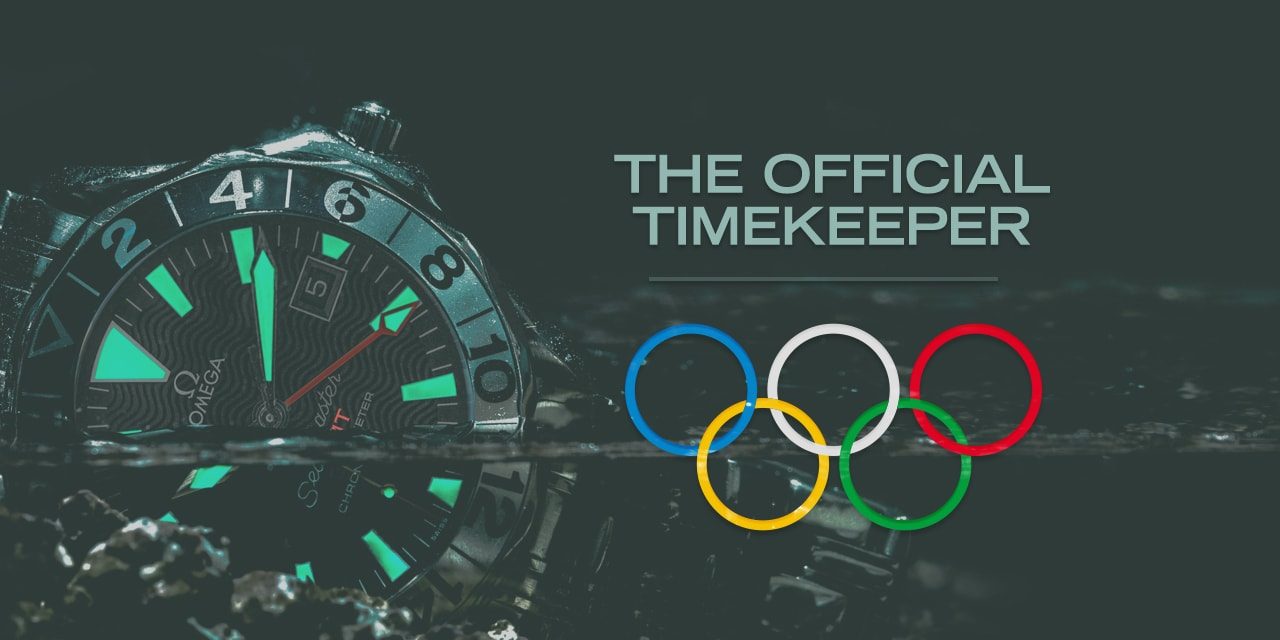Omega – The Official Timekeeper of the 2024 Olympics
Just as we have been conditioned to associate Rolex with F1 races and Grand Slam tennis events, or Hublot with the soccer World Cup and Champion’s League, so the Olympic Games and Omega are joined to an almost Pavlovian degree in our minds thanks to constant branding recognition.
You will see the Swiss manufacture’s simple, Greek letter logo emblazoned at every event in the current Games in Paris, the 31st time the company has sponsored the spectacle since 1932. This year, Omega has dispatched 530 professionals to operate their state-of-the-art equipment, covering a total of 329 contests across 32 sports. And it is not just timekeeping which is entrusted to the brand. Omega also measures a host of other metrics, analyzing individual techniques and utilizing the latest AI technology to give immediate data on specific performances.
It has been an extremely fruitful relationship for both parties. With competition between participants becoming ever more demanding, it has, in turn driven incredible innovation from Omega in order to time finer and finer margins.
For the watchmaker, the Games also represents the best marketing opportunity for its collection of watches since the moon landing, and the list of Olympic-themed special and limited edition versions of some of their most popular models is a long one.
Below, we take a more detailed look at the Omega Olympic partnership.
Omega’s History at the Olympics
While Omega certainly seems to have a monopoly now, they haven’t always had the Games all to themselves.
The first modern Olympics took place in 1896 in Athens, Greece. On that occasion, organizers turned to another Swiss brand, Longines, for timekeeping duties. In the four subsequent events, held in Paris, St. Louis, London and Stockholm, the Games committee brought in stopwatches from a number of different manufacturers, before Heuer took over sole responsibility between 1920 and 1928 for the Antwerp, Paris (again) and Amsterdam Games.
However, even though the timepieces used were the best of the era, they were only accurate down to 1/5thsecond. That led to a level of inconsistency which would be considered scandalous today and meant only the winner of an event was furnished with their finishing time. As the Olympics grew in stature, it left the door open for one of horology’s longest-running and most well-established names to offer their services.
Omega Enters the Games
Los Angeles 1932 marks the first time Omega were solely entrusted with the Games.
For that initial occasion, the brand sent just one watchmaker to take charge of the 14 sports and 117 events, armed with 30 stopwatches. But these exceptional models were not only certified for accuracy by the Neuchâtel Observatory, they were also capable of measuring to the nearest 1/10th of a second AND featured a rattrapante, or split-seconds, function.
With their contribution a success and, just as importantly, Omega gaining some priceless advertising endorsement outside of their native Europe, the company started to pour enormous resources into their timing technology.
As early as the 1948 London Games, the first post-war event, they had dispensed with mechanical stopwatches as their primary source and replaced them with their proprietary ‘Magic Eye’, the first photo-finish camera to record an image and time simultaneously.
By the following Games, Helsinki in 1952, Omega had developed a new Racend Timer which could measure down to 1/100th of a second.
Since then, Olympic history holds a litany of innovations by Omega. The Omegascope from 1964 superimposed a stopwatch display directly onto TV screens, giving viewers real time results for the first time. 1968 saw the introduction of the swimmers’ touchpad, allowing competitors to stop their own timers. In 1972, the winner of the men’s 400M medley swim was determined by 1/1,000th of a second.
The manufacture can also claim credit for the first false start detector in 1984, the first technology to measure both a sprinter’s speed and acceleration in 1996, the omegatiming.com website in 2000 which gave fans a host of stats on each athlete within 15 seconds of the end of a race, a new type of starting gun in 2010 which played a sound, flashed a light and started a timer simultaneously and the Myria photo finish camera in 2016 which took 10,000 digital images per second to record finish lines.
More recently, Omega developed a series of wearable technologies to track and scrutinize every movement a participant made and transmit its information instantaneously around the world.
Omega in Paris 2024
So what is Omega bringing to the latest games? In fact, what more could they offer over the tech they have already devised?
Paris will see a new generation of their Scan’O’Vision ULTIMATE Photofinish camera, capable of recording an incredible 40,000 images of a race’s finish line. And their Computer Vision systems are now so advanced athletes no longer have to wear sensors at all. Wearable tech has been superseded by high-definition cameras feeding Artificial Intelligence models regulated for each individual sport, processing live data in real time and helping analysts pinpoint the most critical moments in each performance.
That means, for example, knowing instantly the distance a tennis or volleyball player covers per match, their speed, how hard they hit the ball and with which type of shot. It can give an instant breakdown of a diver’s speed, position and airtime before hitting the water, all represented on a 3D graphic or, for the first time, the measurement of the gap between a pole vaulter or high jumper and the bar, to see just how much space they had to spare.
And, of course, there’s the timing. Omega will provide not only the equipment
to record down to the smallest fractions of a second, but also the personnel, consisting of 550 timekeepers and a further 900 trained volunteers. They will be in charge of the 350 scoreboards and the 200 kilometers of cables and optical fiber that will transmit the spectacle into our homes. All told, the kit weighs somewhere in the region of 350 tons—a long way from LA’s 30 stopwatches in 1932.
Omega and the Olympics have been inextricably linked for 92-years now, and the collaboration has been responsible for an extraordinary legacy of innovation.
In our next article, we will look at some of the beautiful watches the Games have inspired.
Featured Photo: Bhop Phikanesuan via Pexels (cc), Mixed art by Oriol Mendivil.







